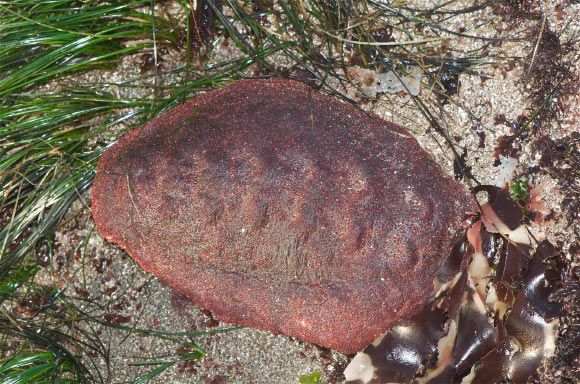A rare iron mineral called santabarbaraite has never before been seen in a living organism, according to a paper to be published in the Proceedings of the National Academy of Sciences.
Chitons are flattened, bilaterally symmetrical marine mollusks in the class Polyplacophora.
These creatures live worldwide, from cold waters through to the tropics.
Their teeth are one of the hardest known materials in nature. They are attached to a soft, flexible, tongue-like radula, which scrapes over rocks to collect algae and other food.
“We’ve been fascinated by the chiton for a long time,” said study senior author Dr. Derk Joester, a researcher in the McCormick School of Engineering at Northwestern University.
“Mechanical structures are only as good as their weakest link, so it’s interesting to learn how the chiton solves the engineering problem of how to connect its ultrahard tooth to a soft underlying structure.”
“This remains a significant challenge in modern manufacturing, so we look to organisms like the chiton to understand how this is done in nature, which has had a couple hundred million years of lead time to develop.”

SEM image of the anterior end of the radula with mature teeth of Cryptochiton stelleri. Image credit: Northwestern University.
In the study, Dr. Joester and his colleagues examined the teeth of Cryptochiton stelleri, a giant, reddish-brown chiton that is sometimes affectionately referred to as the ‘wandering meatloaf.’
They found a mineral called santabarbaraite dispersed throughout the chiton’s upper stylus, a long, hollow structure that connects the head of the tooth to the flexible radula membrane.
“The stylus is like the root of a human tooth, which connects the cusp of our tooth to our jaw,” Dr. Joester said.
“It’s a tough material composed of extremely small nanoparticles in a fibrous matrix made of biomacromolecules, similar to bones in our body.”
The researchers also attempted to recreate this material in an ink designed for 3D printing.
They developed a reactive ink comprising iron and phosphate ions mixed into a biopolymer derived from the chitin.
“As the nanoparticles form in the biopolymer, it gets stronger and more viscous. This mixture can then be easily used for printing,” Dr. Joester said.
“Subsequent drying in air leads to the hard and stiff final material.”
“We can continue to learn from and develop materials inspired by the chiton’s stylus, which connects ultra-hard teeth to a soft radula,” he said.
_____
Linus Stegbauer et al. 2021. Persistent polyamorphism in the chiton tooth: From a new biomaterial to inks for additive manufacturing. PNAS, in press; doi: 10.1073/pnas.202016011








